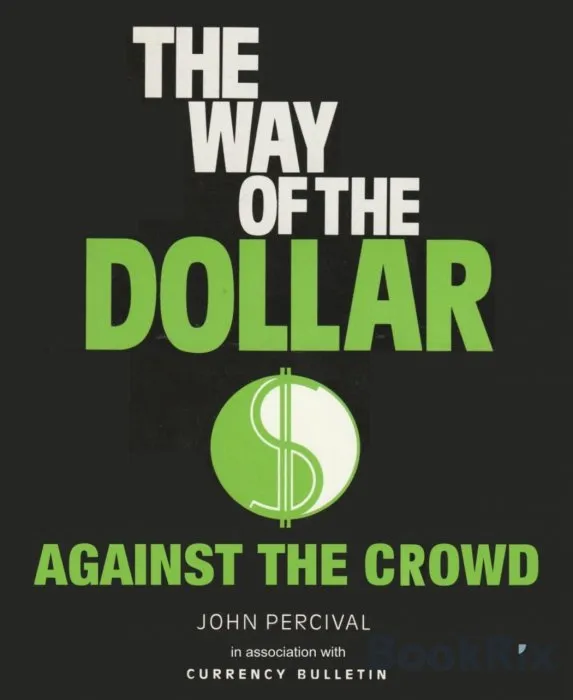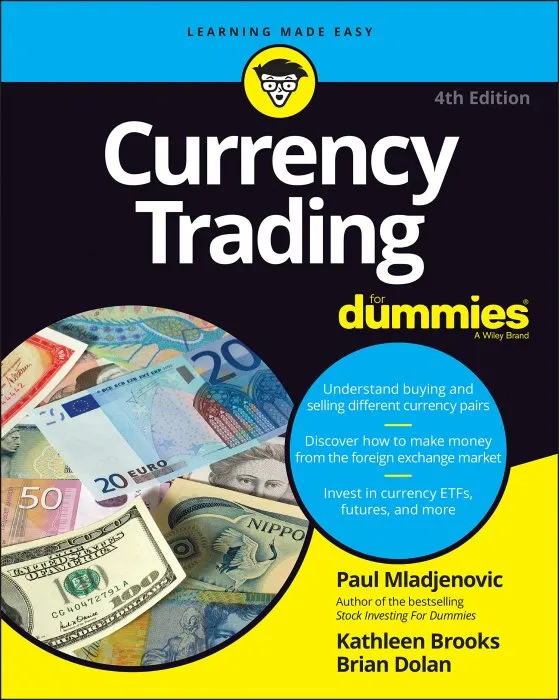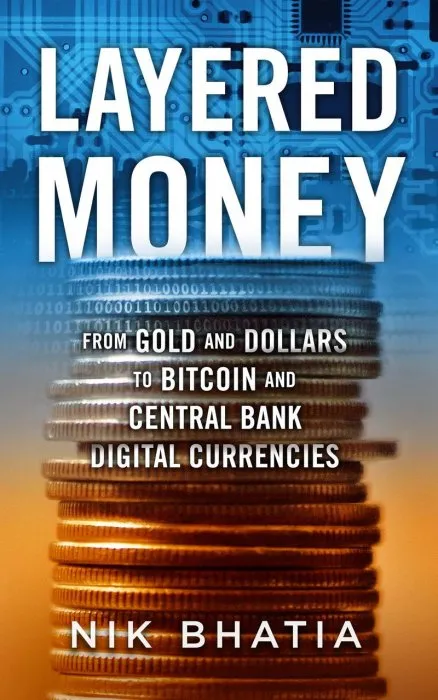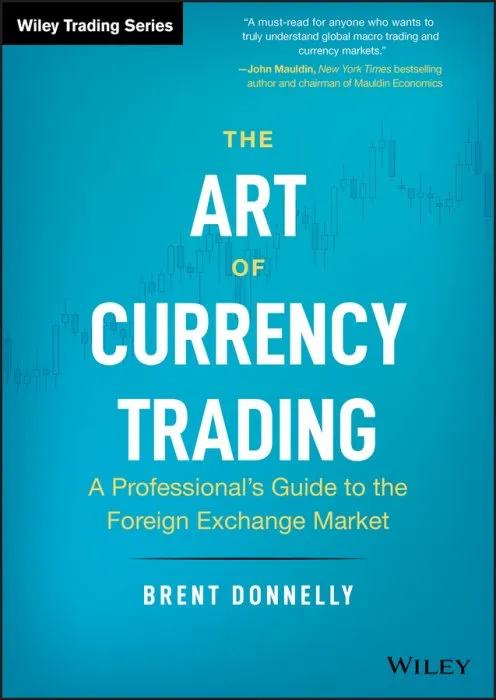The Way of the Dollar: Trading currencies for profit

Date: August 25th, 2020
ISBN: 9783748755005
Language: English
Number of pages: 132 pages
Format: EPUB
Add favorites
THE WAY OF THE DOLLAR TRADING CURRENCIES FOR PROFIT
As readers know, my approach to analysing the currencies – its method – is essentially anti-crowd. We look where the crowd is not looking for an underlying rationale for the direction of the main trend. And we use a series of contrarian* sentiment indicators designed to orient us in the opposite direction to the crowd. This method has worked well, and it is timeless so it should always work. The method is OK. If we can have confidence in it and can apply it, we shall win.
"My all-time favourite currency guy is John Percival (now retired and living comfortably in the French countryside I understand). My respect for his insights over the years is immense." "I have been a reader of John's newsletter for over 20-years. I have learned a great deal from him, through his writings. There is a wealth of insights which I took from a very beaten up copy of his book, The Way of the Dollar, published back in 1991."
"Mr. Percival doesn't know this, but he was the only mentor I had in this market. I read his book from cover to cover to cover ... pages are falling out ... highlighted and notes everywhere. His book provides more insight every time you go back to it. And I go back to it often." "John Percival made a key point in the book that struck me – my belief in what matters when it comes to markets has little to do with trading success. I believed I was well armed given my freshly-minted MBA in finance and economics. I had already worked as a financial analyst and even did a stint in the never-never land of corporate strategic planning (talk about being paid to do absolutely nothing of value). Anyway, Mr. Percival's book opened my eyes, but at the time I still didn't understand just how valuable his advice was."
"After years of trading and barking up all kinds of analytical trees, with major failure and moderate success in currencies, I went back to Mr. Percival's book. This time I appreciated what was right there in the introduction:" Finally one had to see if there were other relationships which had any predictive value for currencies like inflation, trade, money supply, oil prices, economic growth, et al. So far, the conclusion is that few such relationships and none of the relationships that most observers seem to rely on are useful for predicting the dollar.
"Say what? I thought to myself. Heck, I have all these so-called analytical skills and education and now I'm effectively being told by John Percival if you want to trade currencies and make money, you better pack up that degree and see the market for what it is, not what you think it is with your left brain dominance. John Percival argues in his introduction to The Way of the Dollar:" Because the systems constituent parts are mostly based on human behaviour which doesn't change, not on fashion, we can be confident it will continue to work. The financial markets, as anyone familiar with them knows, are deeply paradoxical. They have a logic of their own which is why in a way the opposite of normal logic. Hence the market adage "sell on the news" applies to good news not bad news.
Hence other bits of market lore like "a bull market climbs a wall of worry: a bear market flows down a river of hope." Markets do whatever they need to do to confound the greatest number of people. This happens because prices reflect expectations. If everyone expects unemployment to rise, or a trade balance to fall, or inflation to remain steady, there is no intrinsic reason why they should be wrong: the expectation doesn't affect the outcome. But if everyone expects shares to fall, or the dollar to rise, there is every reason why they should be wrong: because current share price levels already reflect the expectations of lower prices, and the current level of the dollar already discounts a rise. In other words, the expectation vitiates the outcome.
As readers know, my approach to analysing the currencies – its method – is essentially anti-crowd. We look where the crowd is not looking for an underlying rationale for the direction of the main trend. And we use a series of contrarian* sentiment indicators designed to orient us in the opposite direction to the crowd. This method has worked well, and it is timeless so it should always work. The method is OK. If we can have confidence in it and can apply it, we shall win.
"My all-time favourite currency guy is John Percival (now retired and living comfortably in the French countryside I understand). My respect for his insights over the years is immense." "I have been a reader of John's newsletter for over 20-years. I have learned a great deal from him, through his writings. There is a wealth of insights which I took from a very beaten up copy of his book, The Way of the Dollar, published back in 1991."
"Mr. Percival doesn't know this, but he was the only mentor I had in this market. I read his book from cover to cover to cover ... pages are falling out ... highlighted and notes everywhere. His book provides more insight every time you go back to it. And I go back to it often." "John Percival made a key point in the book that struck me – my belief in what matters when it comes to markets has little to do with trading success. I believed I was well armed given my freshly-minted MBA in finance and economics. I had already worked as a financial analyst and even did a stint in the never-never land of corporate strategic planning (talk about being paid to do absolutely nothing of value). Anyway, Mr. Percival's book opened my eyes, but at the time I still didn't understand just how valuable his advice was."
"After years of trading and barking up all kinds of analytical trees, with major failure and moderate success in currencies, I went back to Mr. Percival's book. This time I appreciated what was right there in the introduction:" Finally one had to see if there were other relationships which had any predictive value for currencies like inflation, trade, money supply, oil prices, economic growth, et al. So far, the conclusion is that few such relationships and none of the relationships that most observers seem to rely on are useful for predicting the dollar.
"Say what? I thought to myself. Heck, I have all these so-called analytical skills and education and now I'm effectively being told by John Percival if you want to trade currencies and make money, you better pack up that degree and see the market for what it is, not what you think it is with your left brain dominance. John Percival argues in his introduction to The Way of the Dollar:" Because the systems constituent parts are mostly based on human behaviour which doesn't change, not on fashion, we can be confident it will continue to work. The financial markets, as anyone familiar with them knows, are deeply paradoxical. They have a logic of their own which is why in a way the opposite of normal logic. Hence the market adage "sell on the news" applies to good news not bad news.
Hence other bits of market lore like "a bull market climbs a wall of worry: a bear market flows down a river of hope." Markets do whatever they need to do to confound the greatest number of people. This happens because prices reflect expectations. If everyone expects unemployment to rise, or a trade balance to fall, or inflation to remain steady, there is no intrinsic reason why they should be wrong: the expectation doesn't affect the outcome. But if everyone expects shares to fall, or the dollar to rise, there is every reason why they should be wrong: because current share price levels already reflect the expectations of lower prices, and the current level of the dollar already discounts a rise. In other words, the expectation vitiates the outcome.
Download The Way of the Dollar: Trading currencies for profit
Similar books
Information
Users of Guests are not allowed to comment this publication.
Users of Guests are not allowed to comment this publication.




